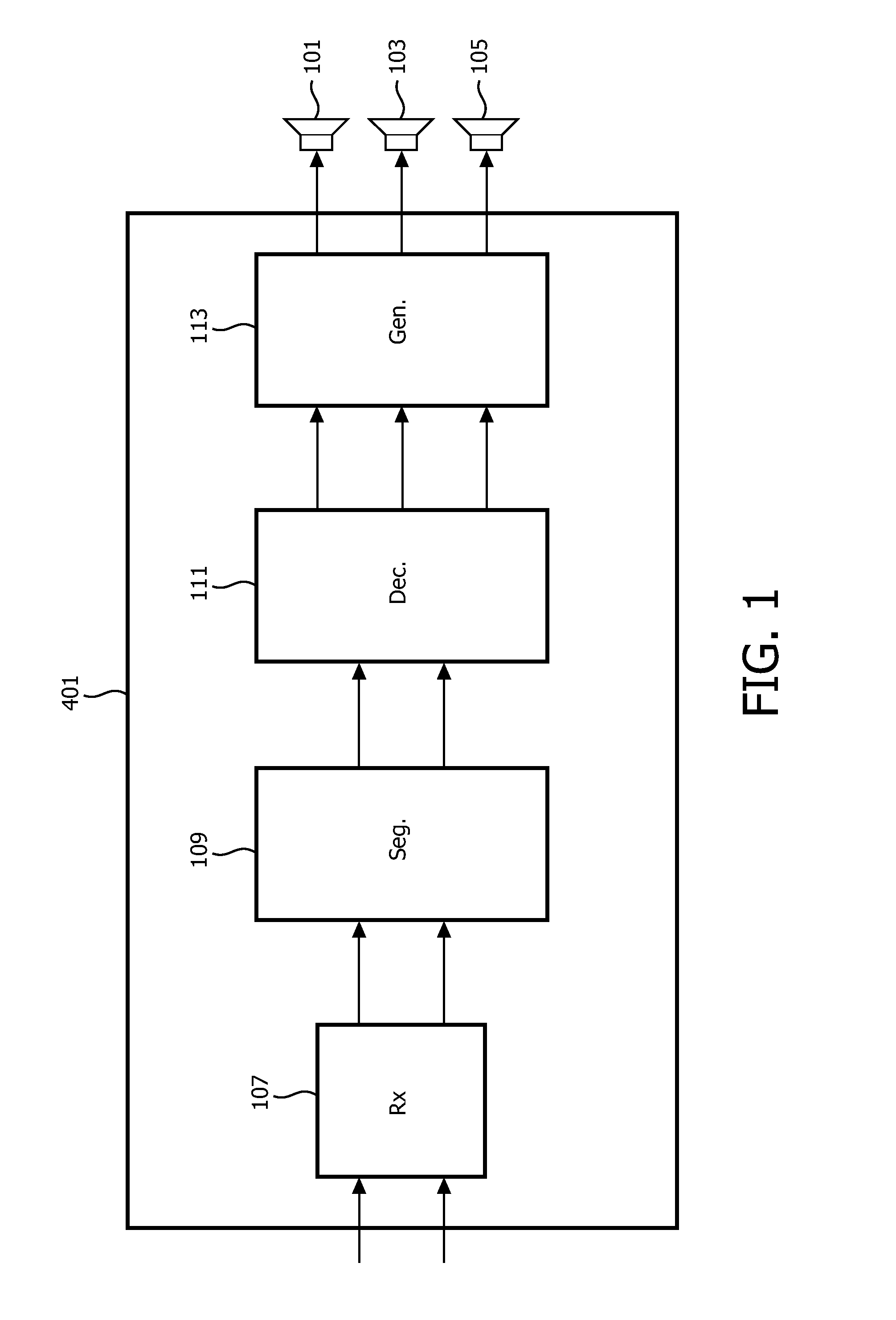System and method for sound processing
a sound processing and system technology, applied in the field of system and method for sound processing, can solve the problems of suboptimal performance, sound sources being spatially shifted or spread, and tending to not provide an optimum listening experience in all scenarios, so as to improve spatial consistency and efficient implementation
- Summary
- Abstract
- Description
- Claims
- Application Information
AI Technical Summary
Benefits of technology
Problems solved by technology
Method used
Image
Examples
Embodiment Construction
[0049]FIG. 1 illustrates an example of a sound reproduction system in accordance with some embodiments of the invention. The sound reproduction system receives a stereo signal and upmixes this to a three channel signal which is then rendered from three different speakers 101, 103, 105.
[0050]The upmixing approach may in many scenarios allow improved quality as it may allow the rendering of signal components to be adapted to the specific characteristics of these. For example, a central speaker may be extracted and rendered from a centrally positioned speaker 103 whereas ambient signal components are rendered from speakers 101, 105 positioned to the front-side of the listening position.
[0051]In the example of FIG. 1, the upmixing is performed by decomposing the stereo signal into a central signal and a stereo signal. The decomposition is based on time-frequency signal segments and for each stereo pair of segments, a similarity measure is used to estimate how centrally placed the corres...
PUM
 Login to View More
Login to View More Abstract
Description
Claims
Application Information
 Login to View More
Login to View More - R&D
- Intellectual Property
- Life Sciences
- Materials
- Tech Scout
- Unparalleled Data Quality
- Higher Quality Content
- 60% Fewer Hallucinations
Browse by: Latest US Patents, China's latest patents, Technical Efficacy Thesaurus, Application Domain, Technology Topic, Popular Technical Reports.
© 2025 PatSnap. All rights reserved.Legal|Privacy policy|Modern Slavery Act Transparency Statement|Sitemap|About US| Contact US: help@patsnap.com



